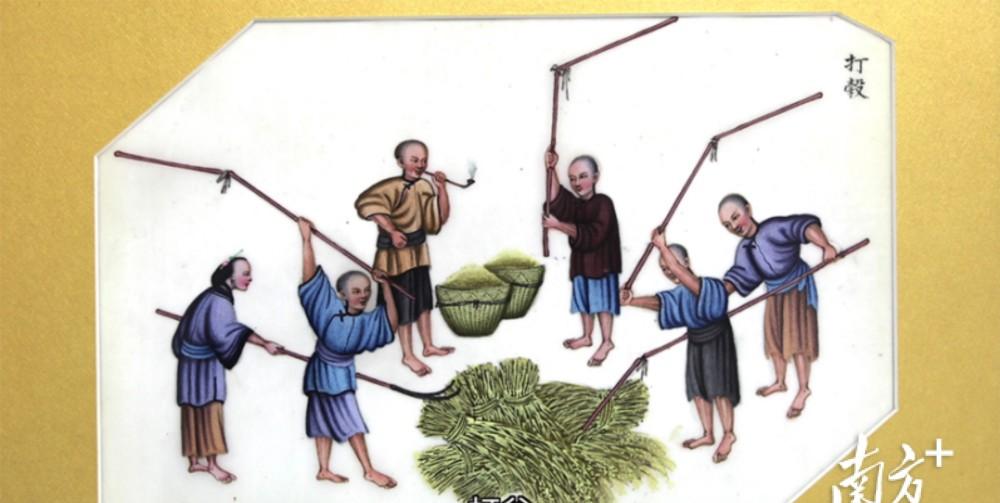Referring to the exports of the Qing Dynasty from Guangzhou to all over the world, in addition to the well-known tea, silk, and porcelain, there is also a commodity that also plays an important role in foreign trade - grass watercolor painting. In the Opium War Museum, there is a set of Qing Dynasty agricultural grass watercolor paintings, because of its size and form similar to today's postcards, it is also known as "Qing Dynasty postcards".

Tongcao watercolor painting is the rise of Guangzhou port, in order to meet the needs of the Western market and creation, combined with Chinese and Western painting techniques, mainly depicting oriental customs, folk customs, production and life and other scenes, is the window for Westerners to understand Chinese society.
The set of Qing Dynasty farming grass watercolor paintings displayed in the "Opium War" exhibition depicts the whole process of qing dynasty farmers planting rice, watching cattle, buying seedlings, planting seedlings, cutting grass, bearing grass, threshing, drying grain, cabinet grain, rent collection, grinding grain, scooping rice and other 12 rice planting and production scenes, 72 characters have different looks, interesting actions, and great ornamental value.
The rice planting and production scene depicted in the Qing Dynasty's agricultural grass watercolor paintings is deeply influenced by the traditional "Farming and Weaving Map". China's agricultural civilization has a long history, and rewarding reclamation, building water conservancy, and planting grain and mulberry are important contents of the performance appraisal of officials in previous dynasties. The "Ploughing map" is the embodiment of the ruler's policy of persuading the peasants. During the Southern Song Dynasty, there was the creation of agricultural cultivation as the subject of painting; Jiao Bingzhen in the Qing Dynasty was ordered to draw the "Imperial Cultivation and Weaving Map", and the Kangxi Emperor personally wrote a preface to the "Imperial Cultivation and Weaving Map": "Remember the foundation of the people, take clothing and food as the sky." "The export of grass watercolor paintings depicting farming scenes is naturally also influenced by this series of farming drawings.
According to reports, the composition of this set of agricultural grass watercolor paintings is similar to the traditional Chinese painting blank art style, and the picture highlights the agricultural production process and creates an atmosphere of pastoral life.
The face depiction of the 72 characters in the painting is in line with the traditional Chinese portrait aesthetics, but the characters are depicted in meticulous clothing and folds, using Western painting techniques, the light and shadow effects of light and shadow are obvious, realistic and realistic, and the farming scene is continuously narrated, which increases the viewing of the picture. It records the whole process of rice cultivation and production in a realistic way of painting, satisfies the psychology of Westerners hunting mysterious eastern world male cultivators and women weaving pastoral life, and provides important historical image materials for us to study Qing Dynasty society today.
[Reporter] Ma Xinjie
[Source] The Opium War Museum
【Author】 Ma Xinjie
【Source】 Southern Press Media Group South + client